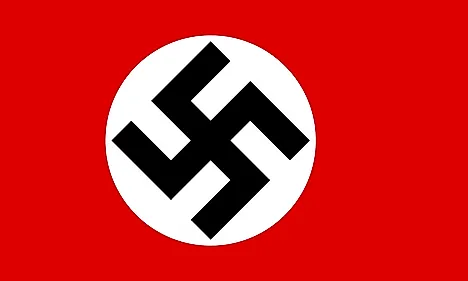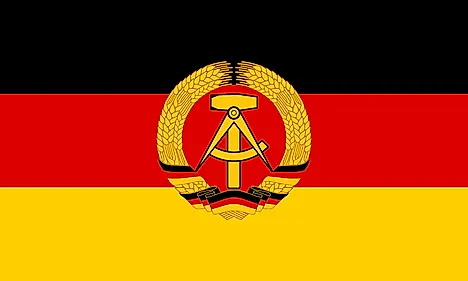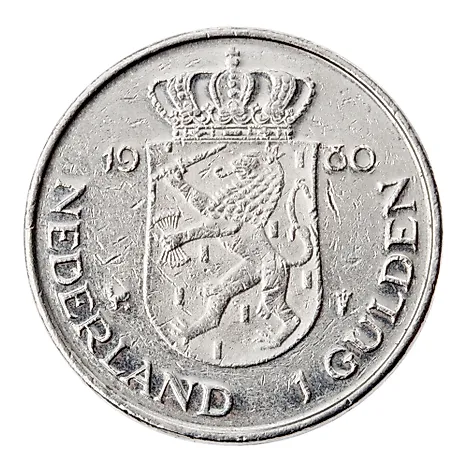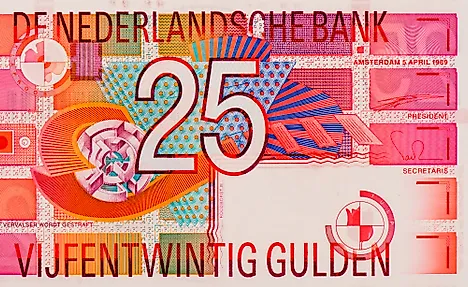Flags, Symbols & Currency of Germany
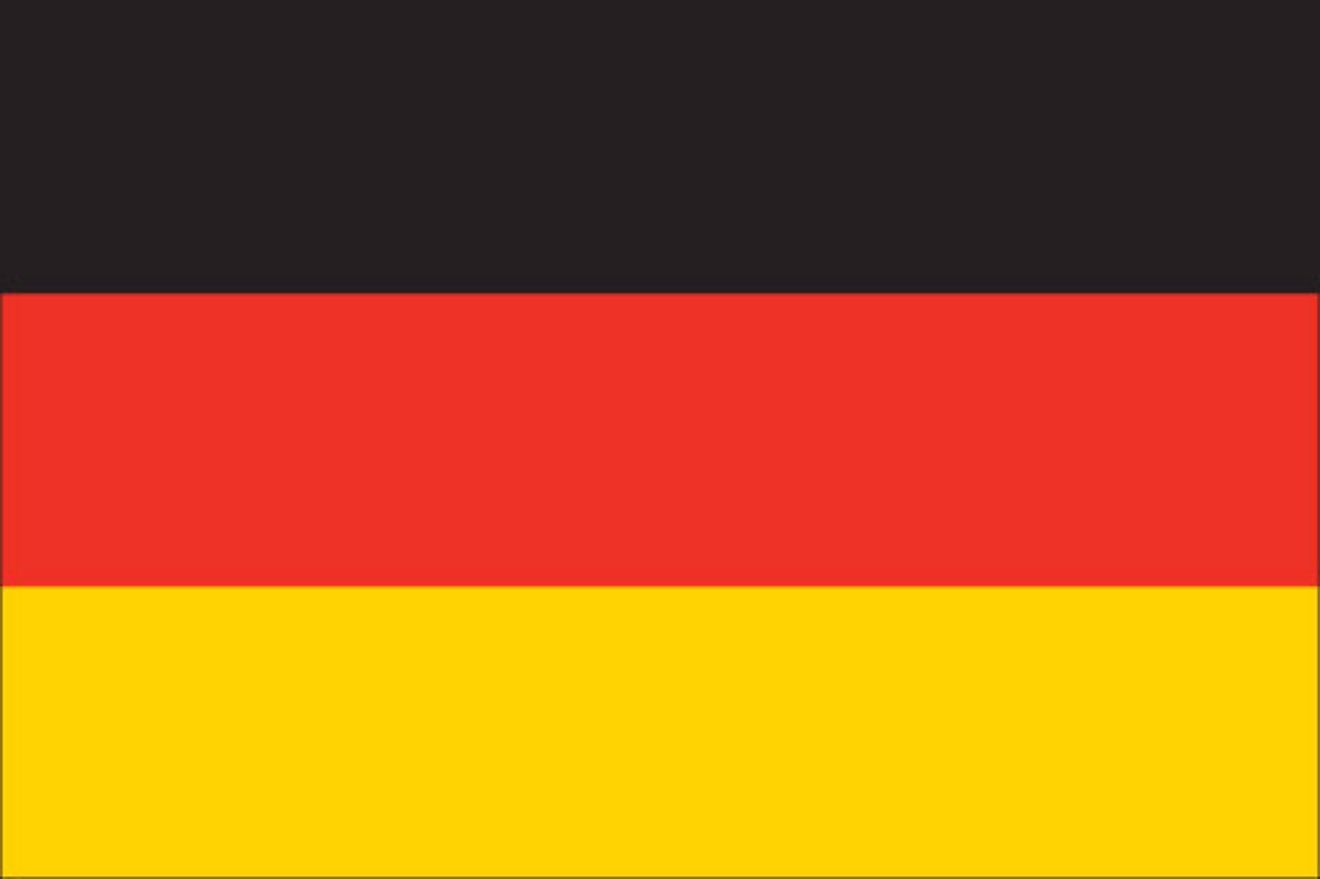
The National Flag of Germany was officially adopted on May 23, 1949.
The National Flag of Germany features three equal horizontal bands of black (top), red, and gold. These colors have played an important role in German history and can be traced back to the medieval banner of the Holy Roman Emperor, which had a black eagle with red claws and beak on a gold background. The black, red, and gold were taken from the uniforms of German soldiers during the Napoleonic Wars. Germans associate the colors of the modern flag with freedom and unity since they were adopted by the first attempt in the united German republic. The flag has a width-to-length proportion ratio of 3:5.
History of the Flag of Germany
The horizontal tricolor flag used today dates back to as early as 1778 and was popularized by the German Confederation in 1848. However, when the confederation failed, the flag was no longer used. When the Prussian king united Germany and became emperor in 1871, he adopted a black, white, and red flag for the German Empire. This tricolor, which came to be known as ‘imperial colors’, served until the defeat of the Second Reich during the First World War. In 1919, the black, red, and gold flag (known as the "republican colors") was adopted by the newly formed Weimar Republic. The colors black, red, and gold represented the colors of the centrist, republican and democratic political parties in the Weimer Republic, which had formed a coalition to avoid ascension to power by war-mongering or pacifist extremists. However, the switch from the imperial colors to the republican colors was controversial to many in the Weimer Republic at the time. When the Weimar Republic collapsed in 1933, and the Nazi Party was elected, the flag of Germany was reverted to the red, white, and black design of former years. The official flag of the Nazi Party, which featured a black swastika, was also simultaneously used to represent the country at this time.
When the Nazi Party gained full control of Germany, they discontinued the use of the red, white and black flag in favor of the flag of the Nazi party, which featured a black swastika. This flag was used to represent Germany until the end of World War II, which saw a ban on all Nazi symbols, including the flag. This ban on Nazi symbolism continues in many countries to this day, including Germany, where it is most strictly enforced.
Throughout the time of a divided Germany, a time spanning the years 1949 to 1989, East Germany and West Germany used different flags. Although there was some hesitancy to accept a national flag before eventual reunification, West Germany adopted the black, red, and gold flag of Germany that we know today. As East Germany was under Soviet rule, the flag did not yet represent them, although they used a similar flag. From the year 1959 onwards, East Germany used a flag that incorporated the black, red, and gold background with the Coat of Arms of East Germany on the flag. Use of this flag was banned in West Germany, as it was seen as a symbol against unification. Ever since the fall of the Berlin Wall in 1989, the black, red, and gold flag has officially stood for all of Germany.
Symbols of Germany
The National Coat of Arms of Germany

The country's coat of arms (featuring a dominant eagle) is said to have originated around 1200. Over the centuries many variations have been adopted for military and political reasons, but the eagle has remained as the central theme. The current official Coat of Arms was adopted by the Federal Republic of Germany on January 20, 1950. It features a single-headed black colored eagle, with open wings and possessing a red beak, a red foot, and a red tongue. The black eagle has been placed on a blazoned golden yellow shield. The eagle symbolizes Bundesadler (“Federal Eagle”). It is the world’s oldest Coat of Arms and the oldest European national symbols.
National Motto
"Einigkeit und Recht und Freiheit." ("Unity and Justice and Freedom.")
National Anthem
- Anthem Title: "Das Lied der Deutschen" ("Deutschlandlied") ["The Song of the Germans"]
- Music Composer: Joseph Haydn
- Lyricist: August Heinrich Hoffmann von Fallersleben
- Date of Adoption: August 11, 1922; restored on: August 27, 1991
"Das Lied der Deutschen" ("Deutschlandlied") ["The Song of the Germans"] is the national anthem of Germany. The music of the anthem has been composed by Joseph Haydn - an Austrian composer. The lyrics have been authored by August Heinrich Hoffmann von Fallersleben - a German linguist and poet. The anthem was chosen as the national song on August 11, 1922 by the Weimar Republic. It was officially adopted as the national anthem of West Germany in 1952. Upon the reunification of Germany on October 3, 1990 ,only the third stanza of the song was officially accepted and restored as the national anthem on August 27, 1991.
"Das Lied der Deutschen" (German)
Einigkeit und Recht und Freiheit
Für das deutsche Vaterland!
Danach lasst uns alle streben
Brüderlich mit Herz und Hand!
Einigkeit und Recht und Freiheit
Sind des Glückes Unterpfand –
|: Blüh' im Glanze dieses Glückes,
Blühe, deutsches Vaterland! :|
"The Song of the Germans"
Unity and justice and freedom
For the German fatherland!
Towards these let us all strive
Brotherly with heart and hand!
Unity and justice and freedom
Are the safeguards of fortune;
|: Flourish in the radiance of this fortune,
Flourish, German fatherland! :|
The Currency of Germany is the euro
Since 2002, the official currency of Germany is the euro (€). The euro symbol was designed by a Belgian named Alain Billiet. The € draws inspiration from the Greek epsilon (Є) which is a referral of the infancy of European civilization. The first letter stands for Europe and the two parallel lines signify the euro’s stability.
The euro comes second immediately after the United States dollar as the most used currency worldwide.
Coins
The euro is subdivided into 100 cents. The coins circulating have a primary side bearing the map and values or denomination. The Latin version of the euro is used due to a larger number of languages used by different members together Arabic numerals. However, from 2007 or 2008 depending on the member state, the current currency has a map depicting nations outside Eurozone. Luc Luycx became the primary designer of all standard sides.
The denominations 2c, 1c, 10c, 20c, 50c, 1€, and 2€ coins are circulated. The black eagle features on the German one Euro and two Euro coins.
Banknotes
The notes have conventional designs on the two sides developed by Robert Kalina from Austria. The notes are circulated in the following denominations: 5€, 10€, 20€, 50€, 100€, €200, and €500. Every note came with its color, each marking a particular time in Europe's artistic period. Gateways or windows are designed on the front face of the notes and bridges on the back.
Historical Currencies of Germany
From 1754-1873, the gulden was the currency used in the Southern German states. From 1857-1873, Vereinsthaler was the currency used in the Northern German states. From 1873-1914, the German gold mark was used as the currency in the German Empire. From 1914-1923, the German Papiermark was used as the currency in the Weimar Republic and the German Empire. The German Rentenmark was used as the currency in the Weimar Republic from 1923-1924. From 1924-1948, Reichsmark became the currency in Weimar Republic, Nazi Germany, and Allied-occupied Germany. The Saar mark and franc were the currency used in Saarland from 1947-1959. East Germany used the East German mark as their currency from 1948-1990. West Germany as well as Unified Germany started using Deutsche Mark as their currency from 1948. It was replaced by the euro as the official currency of Germany in 2002.
